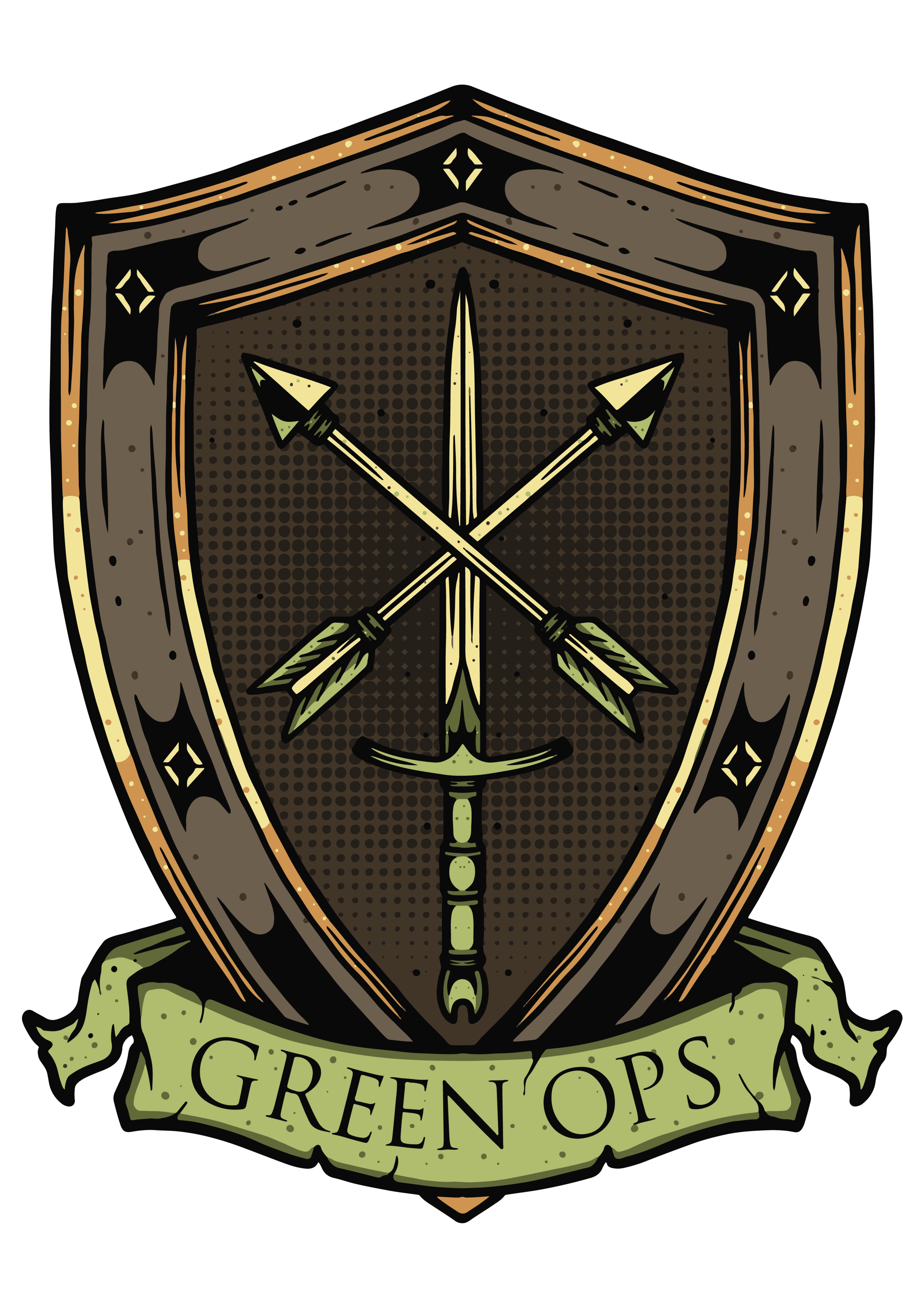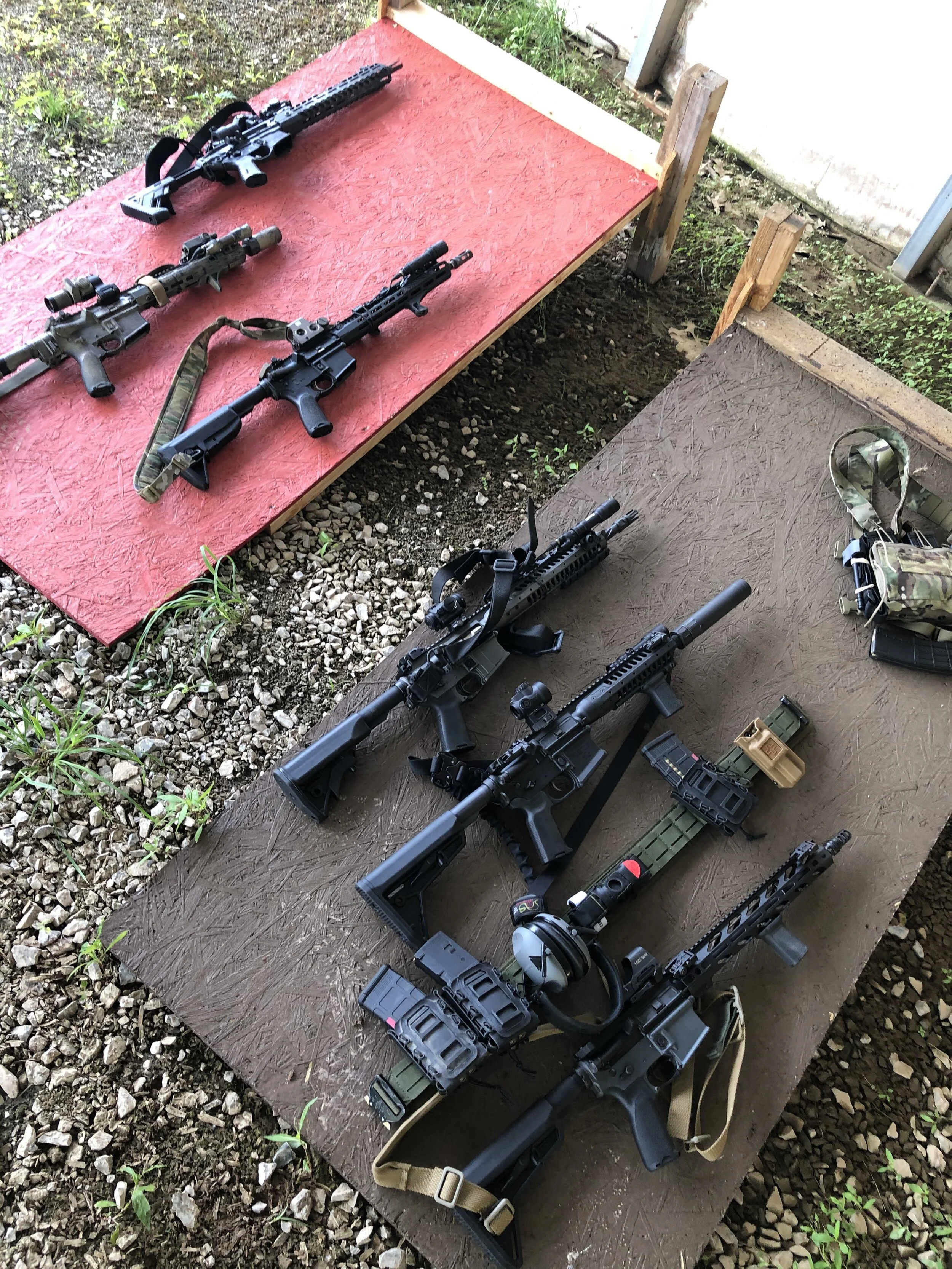AAR at PrimaryandSecondary.com (Tactical Rifle Class)
Always the student is a phrase I have heard repeatedly over the years, and in that phrase, I have always sought out opportunities to learn new skills, improve on skillsets I already possessed, and how to inject life lessons and experiences into those.
Not too long ago I attended the Green Ops Tactical Rifle II course which was held at Shadow Hawk Defense in West Virginia, and I can tell you this about Shadow Hawk, it is by far one of the best training facilities I have ever been able to train at. Great location, range setups, and a plethora of training courses and competitions are held there monthly.
Tactical Rifle II is not exactly a course for beginners and their rifles, and you should have a decent amount of experience with your rifle of choice and all the features of your weapon and any attachments and/or optics you have mounted. One of the best qualities of the Green Ops cadre is their ability to focus on each student and to identify strengths, weaknesses, and areas of improvement.
Of all the Green Ops courses I have attended, never was there a ratio greater than 1 instructor to 5 or 6 students max, ever. With that, the Green Ops cadre has a diverse background ranging from U.S. Military Special Operations to Federal Government positions, and those who shoot and compete regularly in local and national shooting competitions.
Instead of 1 instructor assisting you all day, you have a constantly rotating cadre who can dial in on student capabilities and provide some real world-class feedback and demonstration. This course was a rather small one, and I am pretty sure we can attribute that to the travel climate and the fact that there was also a rather large competition at the range complex that weekend, and some of those shooting competition are also regular students at local and Green Ops courses.
With only 5 students that weekend, our instructor Jo’shua Shaw was given a greater opportunity to provide almost instantaneous feedback as we ran through the 2-day course and various drills that were taught. As with all Green Ops rifle courses, we started with introductions and requisite safety brief. Identifying medical resources, range limits, firearms handling guidelines, and so on.
From there zero was confirmed, and with this level, of course, it is highly recommended that your rifle be zeroed and ready to go. From zero we went into the Green Ops dot torture evolution, which is comprised of various rifle engagements such as slow fire, ready up’s, transitions to targets, and shooting off-hand. The round count for this is 60 rounds and is a great warm-up for the shooters going forward into the following evolution's.
A quick note about rifle zero, and one that we were all relieved to hear, was that the range we were using stretched out to just over 200 yards, so not only were we able to verify zero up close but for those of us who were using the 50/200 or another zero, the ability to verify at distance was very welcoming.
After zero and rifle dot torture, Jo’shua drove us right into the meat and potatoes of the course, and to say trigger fingers were numb and raw would be a major understatement. Day 1 consisted mostly of engagements out to the 25-yard line, and we were also able to stretch out from the 50-yard line when it came to shooting on the move which also included transitions to the secondary firearm when we reached the 20-yard line area.
Controlled pair drills, barricade drills, and malfunctions were covered in-depth and the round count for the day was fairly heavy. The smaller class meant more time on the trigger, thus helping everyone dial their shots in even tighter. And it would not be a Green Ops course if these drills did not include magazine changes, and the positions of standing, kneeling, and prone. Of all the evolution's on Day 1, I would have to say there were 2 that I wanted to work on that were presented; malfunction drills and transitioning from strong side to weak side shooting. The class was familiar with the usual malfunctions such as double-feed and bolt override, but everyone got a little taste of an added step when we setup the malfunctions and then were shuffled around on another shooter rifle.
Most people take for granted that firearms are the same, and thus manipulation should be fairly easy, but when you are running from the 50-yard line, grab someone else’s rile who has a different light setup, a mag release lever, and so on, you take in that although the sequence of operations is the same, you can’t just assume it will always be as easy with your rifle.
A weakness of mine that I need to work on more was transitioning from strong side to weak side shooting, and when we moved into that drill, I left feeling far more confident in my ability to do so. And like other instructors and trainers, the constant reminder to rehearse, rehearse, and rehearse was ingrained throughout the day.
Day 2 began with another initial round of carbine dot torture as a warm-up, and we dove right into the second day of training. Day 2 was comprised of pivot drills, barricade drills, side to side movement, serpentine movements between barricades/obstacles, and one that I enjoyed and took a lot from, shooting on the move with transitions to sidearm.
I have worked on transitions in the past, but rarely have I been given the opportunity on a range such as this with the training area to work on those outside a regular shooter box. As with most things, crawl, walk, and run was utilized, and in doing so we were able to work out things like how our sling length was set up, should it be over/under the opposing shoulder, how to move our carbine/rifle out of the way when transitioning, and how to recover our primary firearm when the drill was complete.
I took quite a bit from that drill and the numerous repetitions we performed, and bringing all the steps into play like deciding when to move on past the malfunction to our sidearm was something that is imprinted into my brain heavily. I also decided that I needed to change up my sling as well. The one I have been using is good and has held up to some torture, but with all the transitions and so on, a sling with some padding is on deck. Day 2 was finished off with what I think we all agreed on was one of the best parts of the whole weekend. We pushed back to the 200-yard line, and at a random distance between there and the targets, a VTAC barrier was also placed offset to the left.
From the 200 we had to engage 2 steel targets from a tank trap obstacle, utilizing 3 different firing positions which included standing, kneeling, and prone. Once you registered a hit on each target from each position, we then sprinted to the VTAC barrier and again engaged the targets using 5 firing slots/positions.
That drill did a lot to reinforce what we had been training on that weekend. Shooting on the move, magazine reloads sling position, getting a stable position, and fundamentals such as breathing, sight alignment, sight picture, and solid trigger manipulation.
The Green Ops 2 day Tactical Rifle course is demanding and will challenge you both mentally and physically. Green Ops is known for always having a great training cadre, and they truly make the Green Ops courses some of the most desirable and sought after courses. It is always a good sign when they advertise upcoming courses, and days alter you see the words “SOLD OUT”. Green Ops have cadre and staff both in Virginia and also in Texas, thereby allowing more people to sign-up and train with an amazing company. I implore you, especially with the way things in society are trending to seek out reputable training companies and instructors. If you own a firearm you need to learn it, inside and out, and always push yourself to learn more.
Green Ops is continually adding courses and venturing out into avenues such as combatives and medical training, bringing in guest instructors with backgrounds and real-world experiences that only make these courses even that much better.
For a complete list of courses and details, you can click this link here. Green Ops is also very visible on social media and often updates when class spots may open or when new courses have been added all together.



